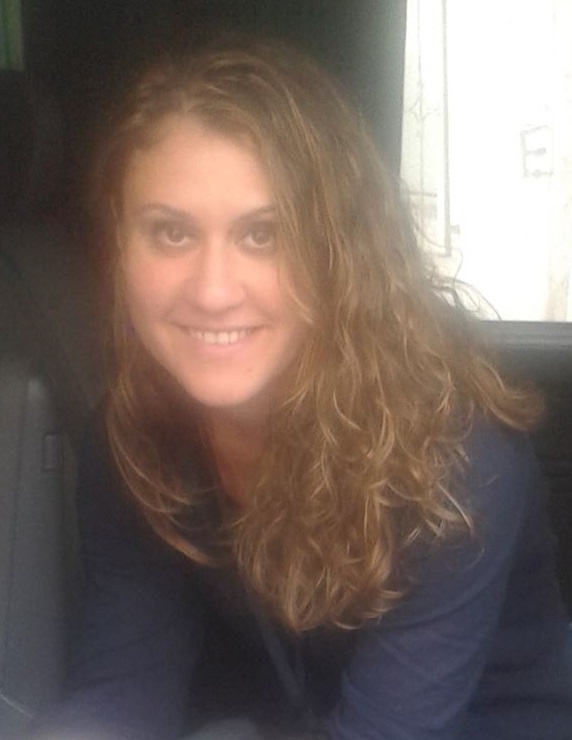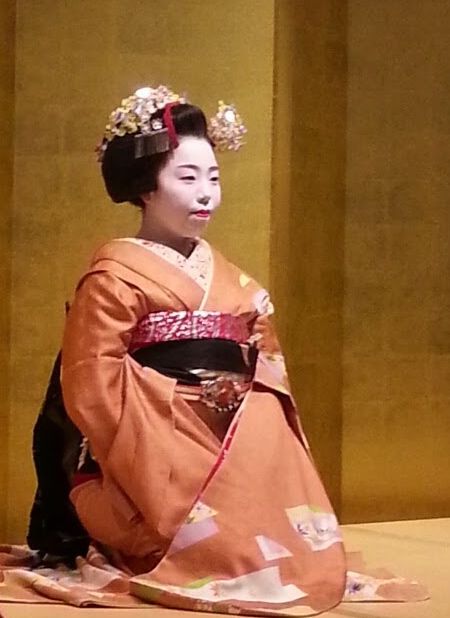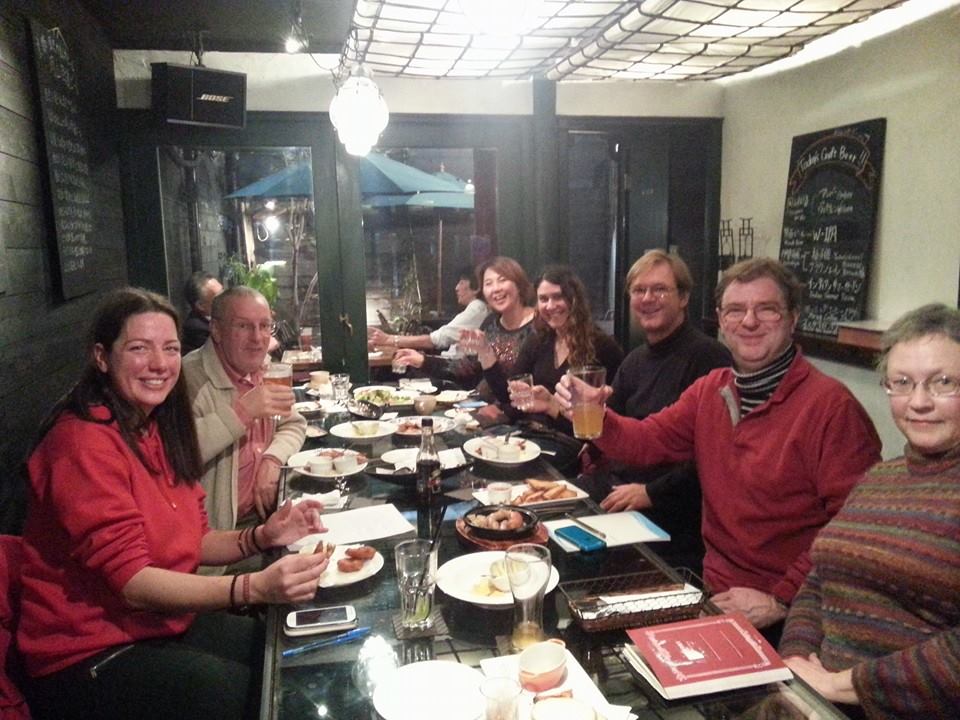
Işıl Bayraktar is currently MEXT (Japanese education ministry) research student engaged in doctoral research at the Graduate School of Sociology at Kyoto University on family change and aging in Turkey and Japan. She keeps a blog and also writes travel notes, short stories and book reviews for several Turkish journals and books.
Here Isil reports on an event organised by WiK partner, SWET Kansai, with whom we hope to cooperate on similar sorts of writing activities in future…
**********************
EVENT REPORT – Walk ’n Write in Kyoto: A SWET Event with Rebecca Otowa
Excited to be part of a walking, writing, and sharing event led by Rebecca Otowa, author of At Home in Japan and My Awesome Japan Adventure, I was one of the eight people who gathered in the rain on March 1 in the shadow of the beautiful gate of Heian Shrine. Although we had prepared ourselves for a day among the trees, water lilies, and history of the shrine’s formal garden, the rain, with all its beauty and power, seemed to be telling us to come another day!
The rain being rather heavy, we agreed on going to the Kyoto International Exhibition Hall (Miyakomesse), which is home to the Kyoto Museum of Traditional Crafts (Fureaikan). The museum features exhibits of 74 types of crafts including ornamental floral hairpins (kanzashi), Nishijin textiles, Kyoto yuzen dyed fabrics, and Kyoto fans. The exhibits offered us a journey into these traditional crafts. The crafts spoke to each of us differently.

As we completed our tour through the crafts exhibits, the scheduled performance of traditional maiko dance was beginning. After having toured the displays of traditional crafts, we could better appreciate themaiko’s handmade kimono with its 6.5-meter-long obi made of fine silk, her make-up, and the floral hairpins in her hair—we realized we were experiencing the traditional crafts through the intermediary of the maiko. Watching her small steps and the expression on her face made us to want to know more. Who really knows the whole story of the maiko? What are the other faces of being a maiko in Kyoto besides performing traditional dances? Thoughts stimulated by the exhibition of traditional crafts, the dance, ruminations on the education, tastes, facial expressions and daily lives of the maiko, and much more filling our heads, we moved on to Tadg’s Irish Pub in Kiyamachi Sanjo for our writing and sharing time.
After ordering snacks and drinks, we started to write down our impressions of our afternoon spent at the Exhibition Hall. What we wrote could be haiku, flash fiction, micropoetry, a sonnet, a plain old paragraph—any medium would do! Following our own muse, as our leader Rebecca Otowa encouraged us to do, we were writing based on our thoughts and impressions, without worrying about the type of written work; we were writing just as the words came to us. What we wrote would be reflection on the arts, the dance we saw, the maiko herself, specific craft items, or even the time we had not spent in the beautiful Heian garden. We might be pondering, too, on the rain or the writer who reminds us that life generates hope within what might seem a hopeless environment.
After we finished writing, we agreed to read what we had written for the group. The readings demonstrated what different words, different impressions, and different approaches we each have to the same images. It was a valuable chance to think again on the meaning of writing through the traditions we had observed.
Our lovely writing day ended with plans for another writing event, hopefully in the Heian Shrine garden. We were all very grateful to SWET and Rebecca Otowa for organizing this wonderful event!

